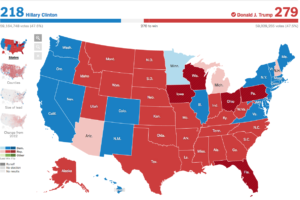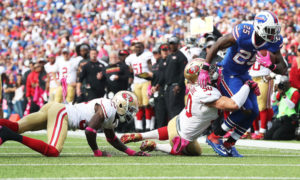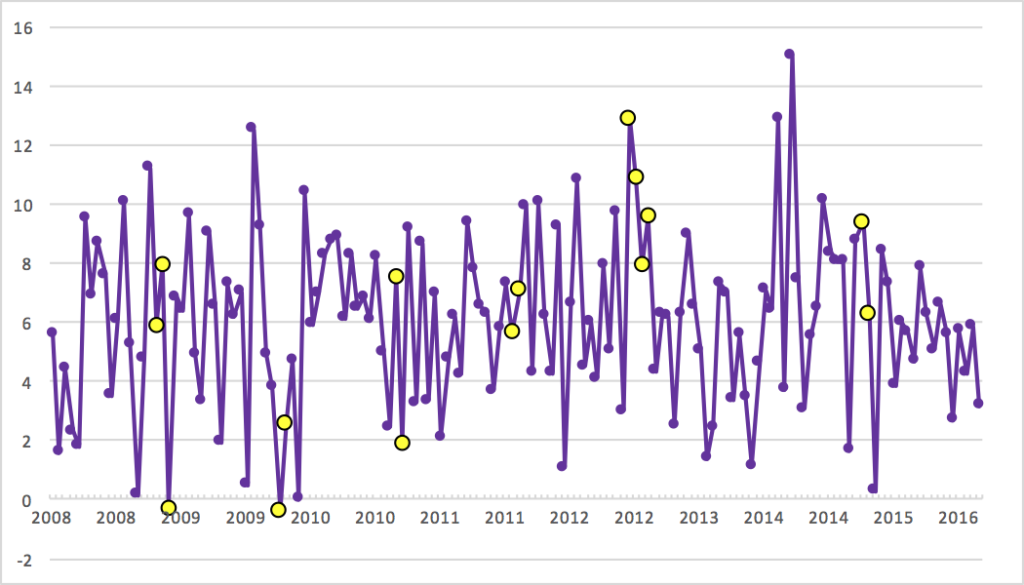Adam Steele is back for another guest post. You can view all of Adam’s posts here. Adam is now on Twitter, and you follow him @2mileshigh. As always, we thank him for contributing.
In 2014, Football Perspective ran a pair of crowd sourcing exercises to determine the greatest quarterbacks and running backs of all time. These experiments were a lot of fun and generated a great deal of debate amongst the participants, so I thought it would be worthwhile to give crowd sourcing another shot. NFL quarterbacks are the most discussed and analyzed athletes in America, but we can’t properly debate the merits of the league’s famous signal callers without considering the effects of their supporting casts. As of today, there is no mathematically accurate way to measure the strength of a QB’s teammates and coaches, but there are plenty of people around who possess the football knowledge to make educated guesses. Basically, this is the perfect candidate for crowd sourcing. I want to keep things simple to maximize reader participation, so there are just a handful of guidelines I expect participants to follow:
1) Please rate a QB’s supporting cast based on how they affected his statistical performance, not his win/loss record or ring count. The supporting cast umbrella includes the direct effect of skill position teammates, offense lines, coaches, and system, but also the indirect effect of defense, special teams, ownership, and team culture. You’re free to weigh these components however you see fit. The rating for each supporting cast will account for the quarterback’s entire career, using a 0-100 scale. As a rule of thumb, a 100 rating equates to an all star team, 75 is strong but not dominant, 50 is average, 25 is weak but not terrible, and 0 is equivalent to the 1976 Buccaneers.
2) Ratings should be roughly weighted by playing time. The years in which a QB is the full time starter should count more heavily than seasons where he’s a backup or spot starter. And this almost goes without saying, but supporting casts are best evaluated in the context of their respective eras.
3) You may rate as many supporting casts as you wish. Since I will be compiling the results by hand, it doesn’t matter how you order your list, as long as it’s easy to read. I ask that you refrain from rating the supporting casts of quarterbacks you’re not reasonably familiar with; if you don’t know anything about a QB’s career, don’t guess! Any quarterback with at least 1,500 pass attempts is eligible to be rated, and I’ve provided a list of these quarterbacks here. Feel free to break up your ratings into multiple posts on different days, but just be sure to post with the same username each time so I can properly count the results. I plan on keeping the poll open for one week, but reserve the right to extend the duration if interest from new participants remains high enough.
Have fun!







